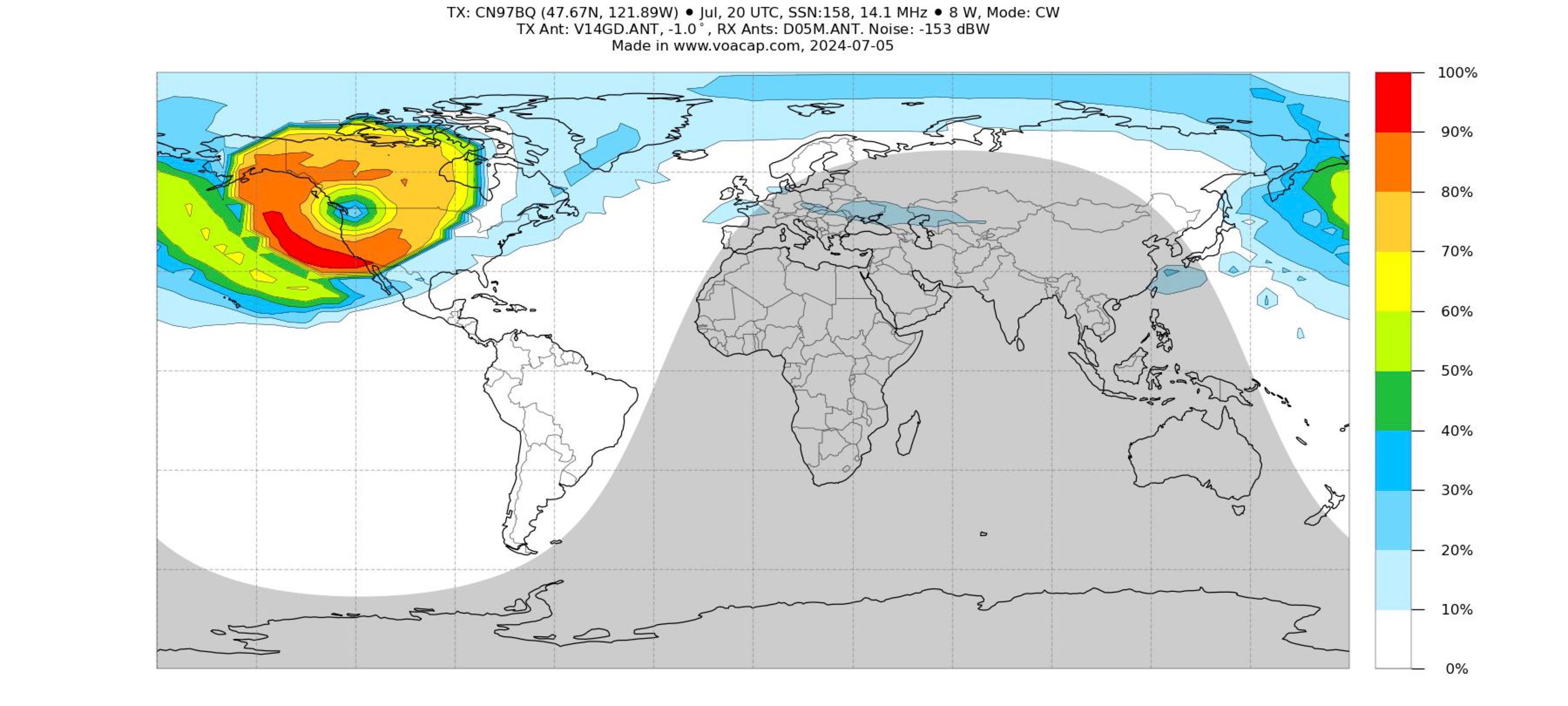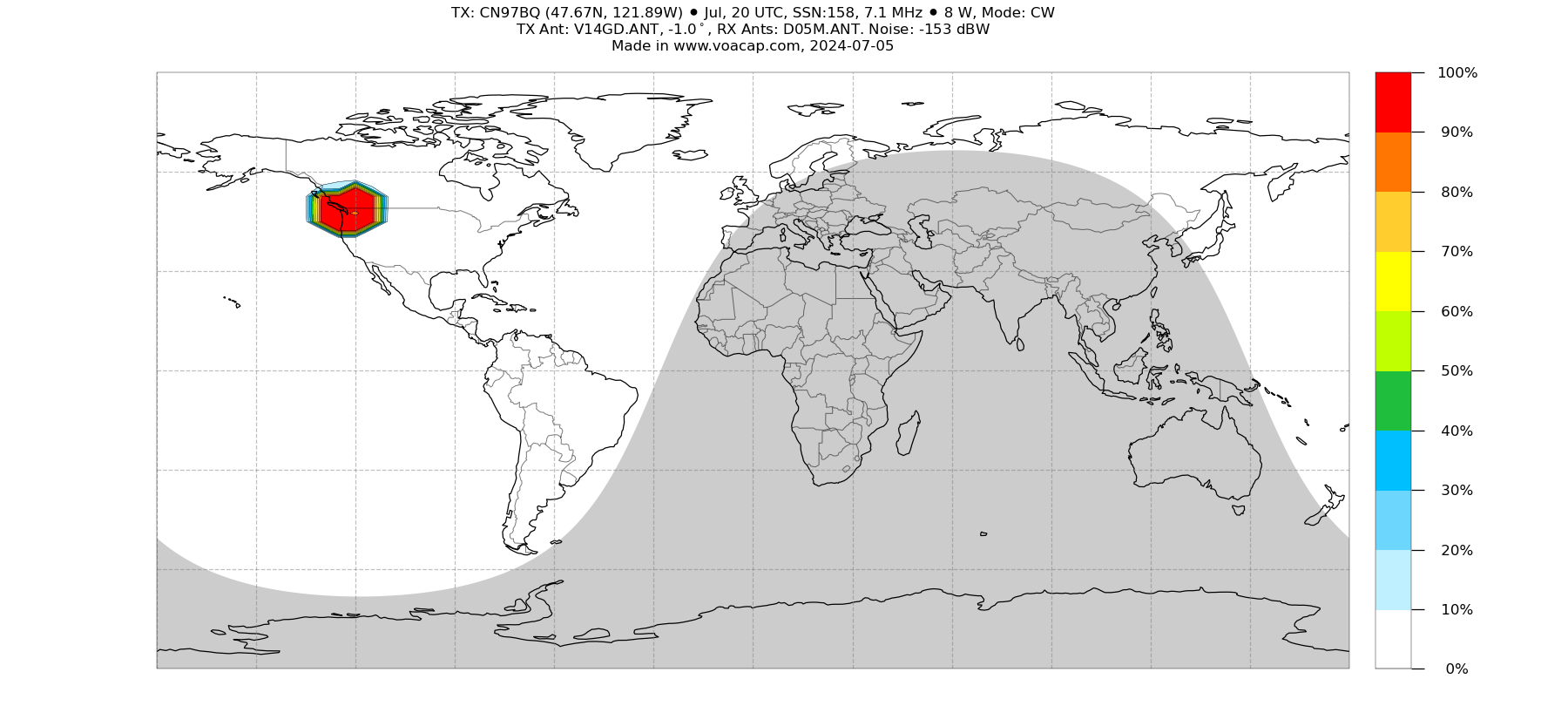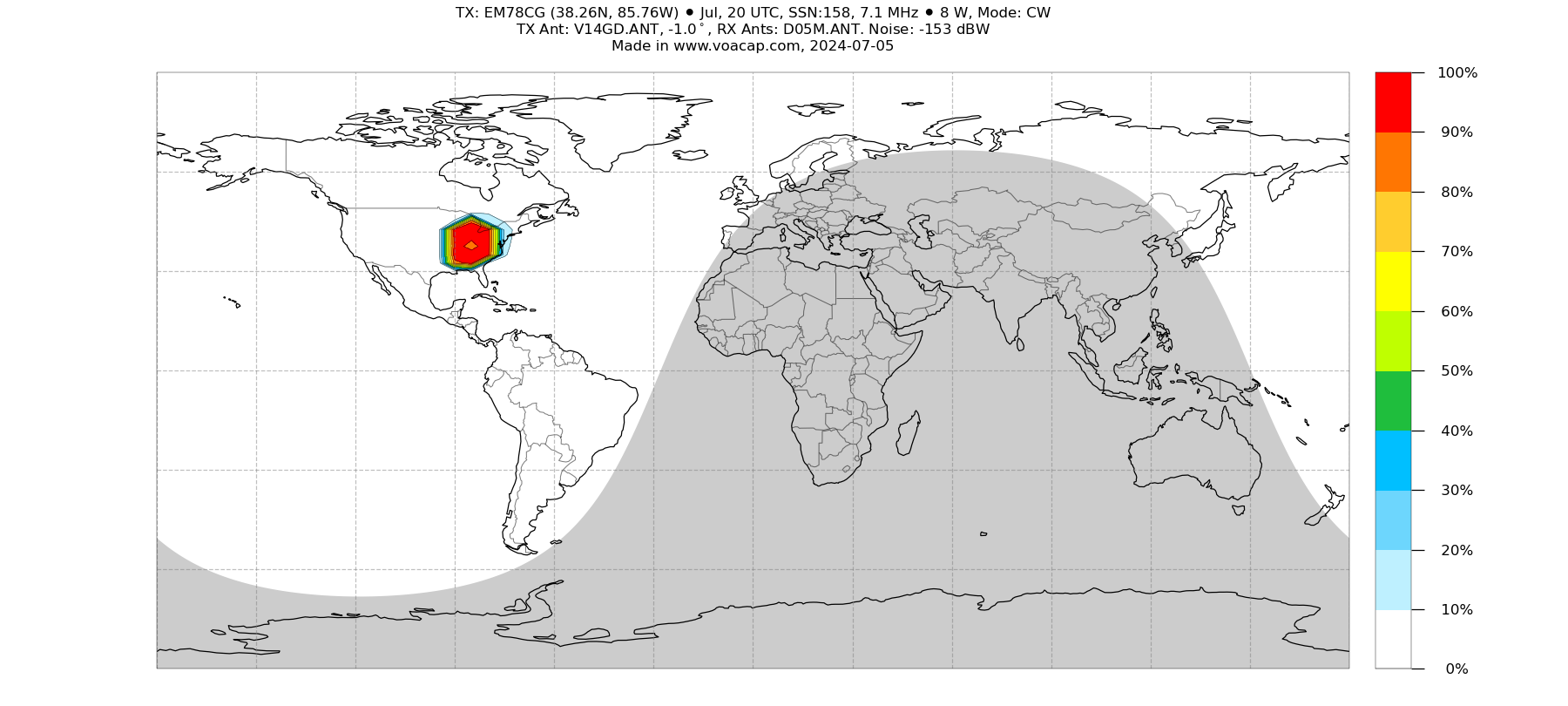Thinking about POTA activations
My recent struggles during POTA activations have had me thinking hard about QRP, activations, and antennas, specifically antennas for POTA park activations. I suppose you could generalize that to field operating, but as I’ll explain, POTA makes for a somewhat special case. Beyond that, my particular situation (being located in the Pacific Northwest) seems to make a special case.
Origin Story
I’ve been amazed by the successful QRPp (sub 1 watt) activations done by Thomas K4SWL and Jim N4JAW.
Here, I’m struggling to get ten contacts using 10 watts, and they’re doing activations using 200mW - fully 17dB lower than me.
17dB. Think about that. My understanding is that one S-Unit is 6dB, so a reduction in power of 17dB is a reduction, at the receiver, of 3 S units. That they can succeed at all is astonishing.
And yet Thomas does it using compromised antennas like the Elecraft AX-1, which makes it even more astonishing.
So that makes me wonder exactly what is going on? When I’m doing an activation, I’m between 3-17 dB louder, but they’re running pileups and I’m calling CQ for 15 minutes to get get a single contact.
I suspect there’s more than one thing going on, here. In no particular order other than the order they pop into my brain, here are some possibilities:
- They are famous, and I am not. Here I don’t mean famous in the usual sense but instead in the “when their callsign gets spotted on RBN/pota.app, there’s a large pool of people who immediately set to hunting them” sense. (I’m not saying they aren’t famous in the usual sense as well, but I think that doesn’t affect their signals)
- Their operating skills are superior to mine. They know which bands to work at various times of day, they know what frequencies to choose within each band, they know how long to wait between CQ calls, their ears are better than mine. Most assuredly, their CW skills are vastly superior to mine.
- Their equipment performs better than mine does. I’m pretty sure my KX2 performs as well as K4SWL’s, but antennas are a whole different ball game.
- They are operating in more favorable environments. Better ground quality, maybe, better local terrain (higher altitude, say, or fewer RF blocking mountains)
- Their geographic location is superior to mine, in that they are located in Louisville, KY or Swannanoa, NC, and thus are smack in the middle of a highly dense cloud of hams who are hunting POTA, whereas I am in the northwest corner of the US, and thus not quite half of my signal footprint is in the Pacific Ocean and another big chunk falls over sparsely populated BC and AB (the Canadian population is basically all in a very thin strip right along the US/Canada border), and the remaining footprint falls in WA, ID, OR, MT, UT which all have a pretty sparse ham population density compared to the east coast.
Much of that is stuff over which I have little or no control. Making myself more appealing to hunters seems fine but it’s unclear how I might do that. Improving my operating skills is something I want to do and I am pursuing but in the meantime, how do I improve my odds? I can buy pretty much any equipment I want. The question remains - which stuff to acquire? I cannot change my operating environment much beyond hiking to the tops of mountains rather than operating from some picnic area at the base. I cannot do anything at all about geographic location beyond traveling to more promising regions.
I suspect the real key, here is interactions between these factors. And one interaction seems particularly important - the interaction between/among terrain, geography, and antenna selection.
Antenna goals
So it seems to me to be worthwhile to stop thinking about ease of setup/teardown of antennas, and instead focus on antenna goals. What is it I want my antenna to do:
- be maximally effective at picking up the signals of any station calling me where they can hear my signal.
- be maximally effective at delivering a readable signal to the stations who might choose to call me.
Geographic Distribution of Hams

And that, right there, seems to me to tell us a lot about why K4SWL and N4JAW (and others) are so successful doing POTA activations at very low power levels and with antennas that are very compromised.
N4JAW, in Louisville, KY, is smack in the middle of the vast sprawl of high ham density covers the eastern half of the US. K4SWL, in western NC, is not quite a centered as N4JAW but that might be deceptive, because essentially every density variation in the map east of the Mississippi river is blotted out by the fact that the density is so high it saturates the rendering.
I understand I’m engaging in a great deal of handwaving, here. Not all hams are active, not all active hams are active in POTA chasing, and propagation conditions are not uniformly distributed across the Earth, and all of those affect what’s going on.
That said, though, it seems to me that hams who are located in the center of the eastern half of the US face a significantly different challenge from hams in the western half.
I cannot change this. But I can tailor how I time my activations, what bands I choose to work, and the antennas I deploy based on an understanding of how the pool of hams (and thus, we hope, the pool of hunters) is distributed.
VOACAP
The tool I’m using to try to understand how to improve my POTA activations is VOACAP. This tool will let me look a propagation predictions for various band, using various different antennas, and various times of day, and present the data in a lot of different ways.
For instance, I can see what the propagation forecast is if I operate on 20m, at 2100Z, using a λ/2 dipole at 5m AGL from roughly where I live (CN97bq):

The significant observations are that:
- I can expect pretty good results with contacts in CA (particularly southern CA), NV, AZ, UT.
- I can expect pretty good results into AK, including near Anchorage and Fairbanks.
- There’s a ‘hole’ that pretty much covers WA, ID, MT
While fiddling with the antenna type (switch it to a 1/4λ vertical, for instance) and time of day will change the details, that basic pattern holds for 20m pretty much all the time.
Watching activation videos done by hams on the East coast I’ve always been surprised at their success on 40m. My experience on 40m matches this propagation forecast for my area:

That’s basically my NVIS footprint. Not a surprise, but spool back and look at the ham density image and observe how many hams that reaches. Not so many.
So let’s contrast that with what N4JAW might see:

Now, that’s Jim’s NVIS footprint, too, not too different in size from mine. My point, though, is that his footprint covers the entire eastern half of the US and is wall to wall hams, and mine is some hams and a lot of empty, with 1/3 of it being ocean.
Doing this exercise for K4SWL and his activations in western NC is left as a trivial exercise for the reader.
Where this is leading me
I’ve spent a day and a half cogitating on this, playing with VOACAP, and trying to come to grips with how propagation differs from band to band, looking at what bands and times are best for reaching what areas that have a concentration of hams. I have only very tentative conclusions at this point.
One conclusion is that, unlike on the east coast, where an activator can pretty much just fire up their radio on 40m with any sort of reasonable antenna, and have a huge pool of hunters who can hear them and who they can hear, POTA activators in the PNW need to be much more savvy about what bands they use, when they use those bands, and what antennas they use on those bands.
For instance, for me, the 40m footprint just doesn’t spread quite far enough to encompass a large number of hunters. 30m, though, looks like it ought to be really promising.
20m is what I’ve been using, in part because that’s what everyone else who’s activating is on 20m, and because it’s really easy to put up a 17’ whip and be on the air with 20m.
But 20m will give me very different footprints depending on time of day, and so some careful thought needs to go into when I think 20m is a good choice.
Likewise 17m and 15m, which offer surprisingly different footprints while still employing easy to use antennas.
Finally, it looks to me like the overhead null in the pattern of a vertical antenna (or of a full λ dipole, e.g. a 40m EFHW run on 20m) means that most of the radiation is down near the horizon. That’s great for DX but for POTA I’m not chasing maximum distance, I’m seeking to match my signal footprint onto an area where the distribution of hunters is higher. So in some cases (e.g. 30m) it makes more sense to use a relatively low dipole instead of a vertical.
And it’s possible that for activations where I’m pressed for time, I’m just going to have to run higher power levels.
More thinking on this is clearly needed.

